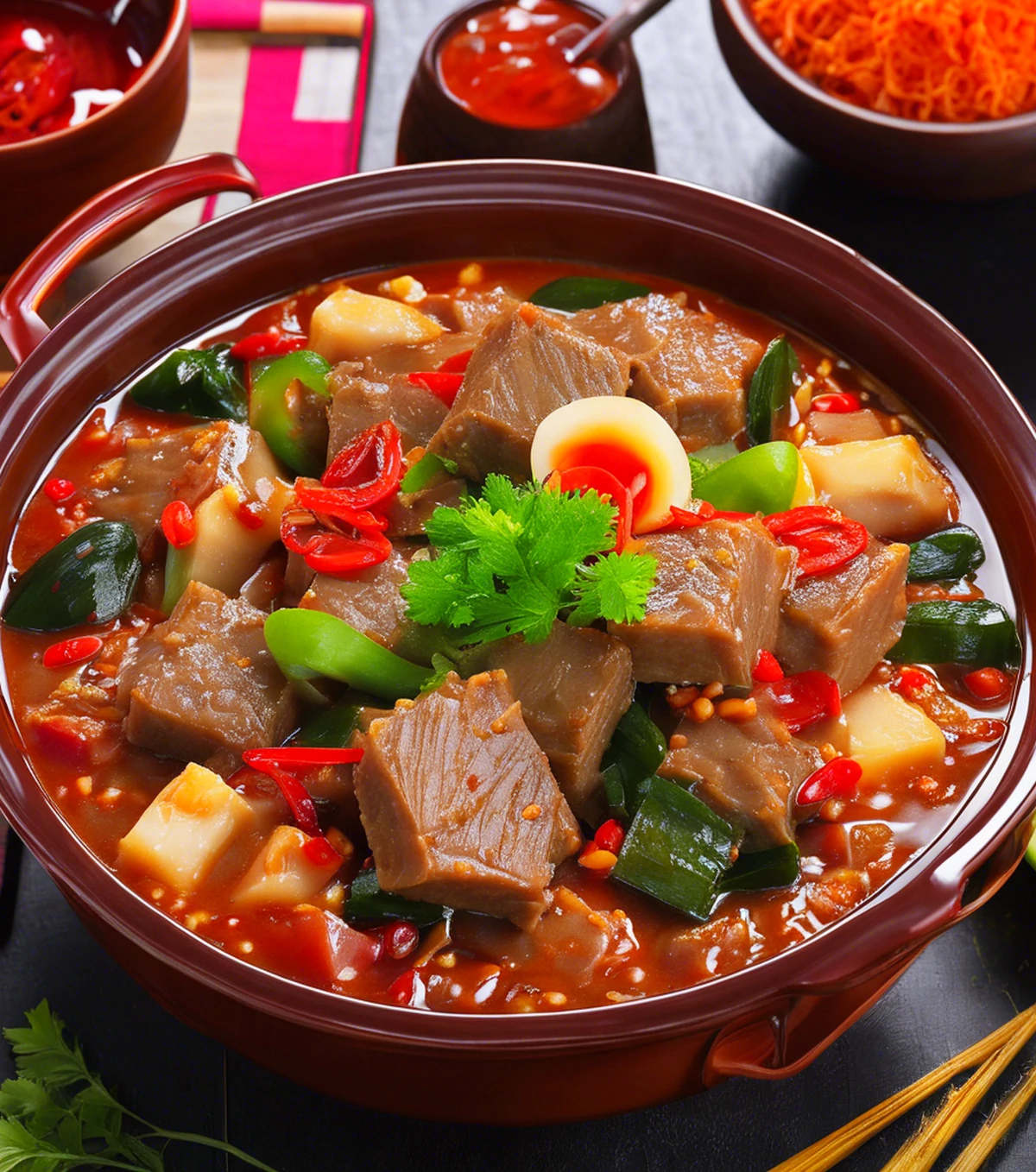Igado Recipe
Igado Recipe is a savory and hearty dish that hails from the northern regions of the Philippines. It’s a unique and flavorful delicacy that has captured the hearts of many food enthusiasts. In this article, we will delve into the traditional Igado recipe, exploring its rich history, key ingredients, and step-by-step cooking instructions. Whether you’re…

Igado Recipe is a savory and hearty dish that hails from the northern regions of the Philippines. It’s a unique and flavorful delicacy that has captured the hearts of many food enthusiasts. In this article, we will delve into the traditional Igado recipe, exploring its rich history, key ingredients, and step-by-step cooking instructions. Whether you’re a seasoned chef or a curious foodie, this guide will help you create an authentic Igado experience right in your kitchen.
The Origin of Igado
Igado is a testament to the diverse culinary heritage of the Philippines, with its roots deeply planted in the Ilocos region. The dish reflects the influence of Spanish cuisine, as evidenced by its name, which is derived from the Spanish word “hígado,” meaning liver. Traditionally, Igado is prepared with a variety of meats, predominantly pork and liver, simmered in a tangy and savory sauce.
Igado Recipe
To create an authentic Igado dish, you’ll need the following key ingredients:
Ingredients for Authentic Igado Recipe.
Ingredients:
- Pork tenderloin, thinly sliced
- Pork liver, thinly sliced
- Garlic, minced
- Onions, chopped
- Bell peppers, sliced
- Green peas
- Soy sauce
- Vinegar
- Bay leaves
- Salt and pepper
- Oil for cooking
Each ingredient plays a crucial role in building the complex flavors that define Igado.
Step-by-Step Cooking Instructions:
- Prepare Meats: Slice the pork tenderloin and liver into thin strips. Marinate the liver in soy sauce and vinegar for 15 minutes.
- Sauté Aromatics: Heat oil in a pan, sauté garlic and onions until soft and fragrant.
- Cook Pork: Add pork tenderloin to the pan, cook until light brown.
- Incorporate Liver: Add marinated liver and its marinade to the pan, cook for a few minutes.
- Add Water and Seasoning: Pour enough water to cover the meat, add bay leaves, salt, and pepper to taste.
- Simmer: Lower the heat, simmer until the meat is tender.
- Add Vegetables: Add bell peppers and green peas, cook until done but still crisp.
- Adjust Seasoning: Taste and adjust seasoning if necessary.
- Thicken Sauce: Continue simmering until the sauce thickens to your liking.
- Serve: Serve hot with steamed rice.
Serve your Igado hot with steamed rice for a truly satisfying meal.
Tips for Perfecting Your Igado Recipe :
- – Balance is key in Igado. The acidity of the vinegar should complement, not overpower, the savory notes of soy sauce and meat.
- – Use fresh liver for best results, as it imparts a distinct richness to the dish.
- – Be careful not to overcook the liver; it should be tender and not too tough or grainy.
Suggest a New Recipe: Zaatar Recipe, a beloved treasure of Middle Eastern cuisine, traces its roots back to ancient civilizations. Originating in the cradle of civilization, the Levant region, encompassing lands such as Lebanon, Syria, Jordan, and Palestine, zaatar has woven itself into the fabric of culinary history. More informations for recipe : Zaatar Recipe
Frequently Asked Questions (FAQs)
What is igado made of?
Igado is a Filipino dish consisting primarily of pork loin and liver, simmered in a tangy and savory sauce of soy sauce, vinegar, and bay leaves. It also features green peas, bell peppers, and sometimes potatoes, adding color and texture. This dish is a staple in Ilocano cuisine, celebrated for its rich flavors and hearty ingredients.
What is the difference between igado and menudo?
Igado and Menudo are both popular Filipino dishes but differ mainly in ingredients and origins. Igado uses pork loin and liver as its primary components, while Menudo typically includes pork, liver, and sometimes cubes of pork heart, in a tomato-based sauce. Menudo is also characterized by its inclusion of diced carrots, potatoes, and sometimes raisins, offering a sweeter taste compared to the tangy and savory profile of Igado.
What is igado in English?
Igado can be translated to English as “pork and liver stew.” This traditional Filipino dish combines pork loin and liver in a soy sauce and vinegar-based sauce, enriched with the flavors of garlic, onions, and bay leaves. It’s a savory, tangy, and slightly bitter stew that showcases the culinary heritage of the Ilocano people.
What is the history of igado in the Philippines?
The history of igado in the Philippines traces back to the culinary traditions of the Ilocos Region, where it originated. This dish reflects the Spanish influence on Filipino cuisine, particularly in its name derived from “hígado,” the Spanish word for liver. Historically, igado was a way to utilize various parts of slaughtered pigs, embodying the Filipinos’ resourcefulness and respect for food. Over time, it has become a beloved dish, representing the rich cultural and historical tapestry of the Philippines.
Conclusion
Igado Recipe is more than just a dish; it’s a cultural experience that brings you closer to Filipino heritage with every bite. By following this authentic Igado recipe, you can transport yourself to the bustling kitchens of Ilocos without leaving your home. Remember to play with flavors, respect the ingredients, and most importantly, share your culinary creation with loved ones.
Whether you’re an experienced cook looking to expand your repertoire or a novice eager to try something new, this Igado recipe is sure to impress. Embrace the adventure of Filipino cooking and let your taste buds revel in the rich tapestry of flavors that is Igado.





